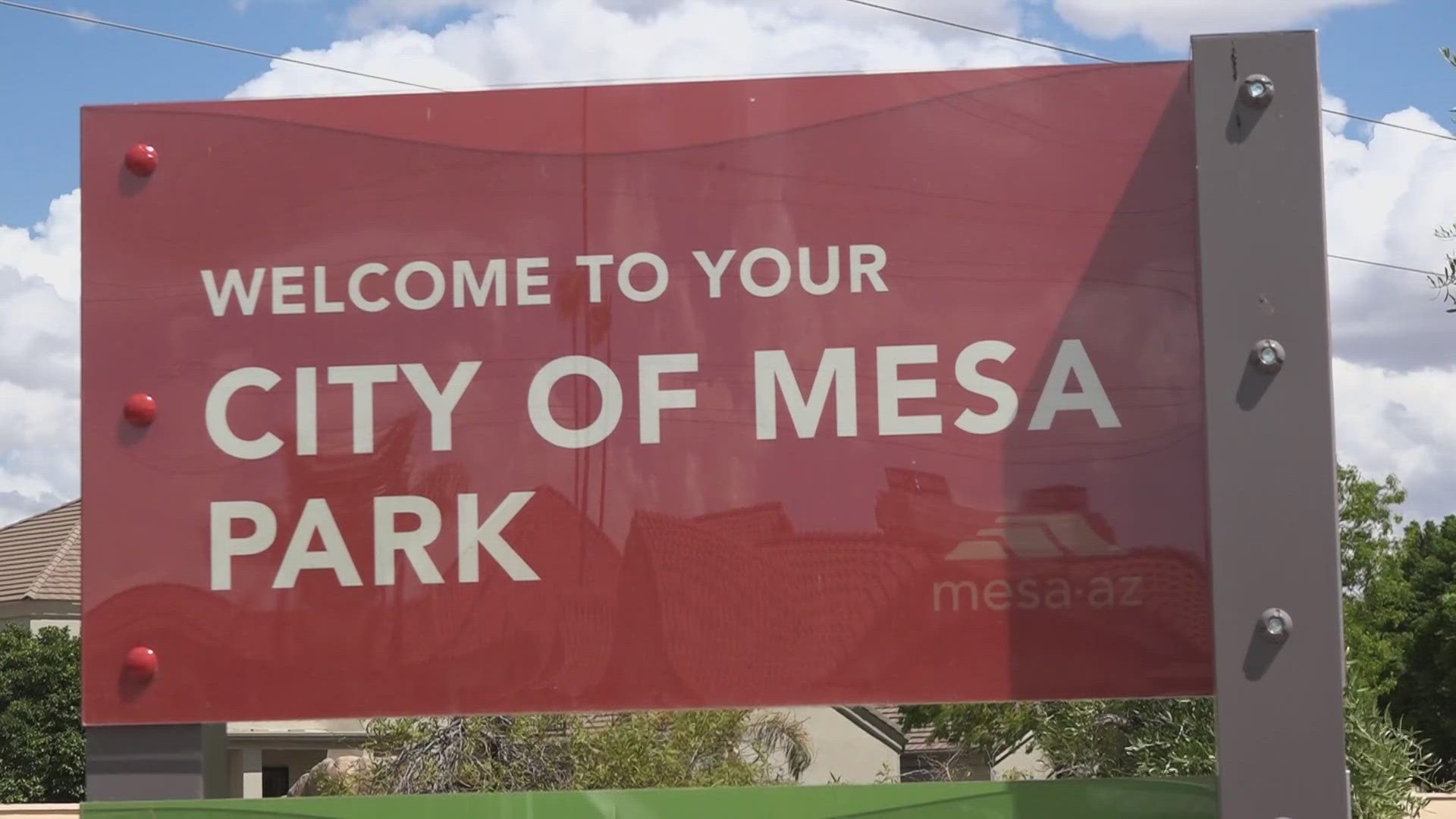MESA, Ariz. — Monday marked the beginning of crews in Mesa starting to remove grass from dozens of parks and retention basins in an effort to conserve water.
The City of Mesa is removing about five acres of turf throughout 54 parks and retention basins that are "non-functional," meaning it may be close to walls where people aren't using the turf for recreation.
The city estimates it'll save more than 5 million gallons of Colorado River water a year. To get an idea of what that'd look like, it's about 15 football fields covered in a foot of water.
"Just by taking out these small strips where we know people aren't playing anyway, we're able to save the water and focus our irrigation down where people enjoy it the most," said Andrea Moore, director of the Mesa Parks, Recreation and Community Facilities Department.
A grant from the Water Infrastructure Finance Authority of Arizona is helping the city off-set the cost of removing the small sections of turf across the city. The turf that's removed will be replaced with granite surrounded by curbing.
"If we rely on just the city's general fund, we could afford to do about 10 to 12 sites a year, and doing 54 all at once, it has a bigger impact on water savings and helps stretch our dollars further," Moore said.
The City of Chandler also is expected to remove non-functional turf across 14 possible sites like retention basins, parks and utility sites and convert them into xeriscape.
"We are currently reviewing design proposals and conducting stakeholder outreach meetings to evaluate the options," Simone Kjolsrud, City of Chandler's water resources manager, told 12News in part of an emailed statement.
Moore said it'll take a couple of years to complete all 54 sites across Mesa and that the remainder of the grass will be available for the community to recreate in.
In addition to the effort to remove non-functional turf, the city is also modifying the irrigation systems to be more efficient as well.
"Being smart with water, conserving water, absolutely, we need to be an example for the community to understand this is a good way to take care of our natural resources. We put grass in places where people play, but we also enjoy desert-adapted plants for natural landscaping," Moore said.

